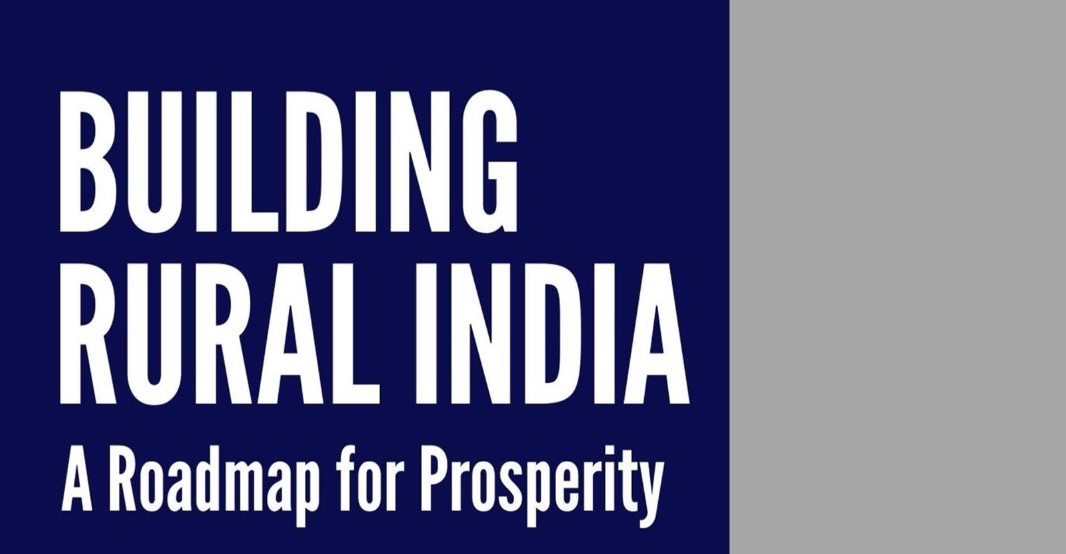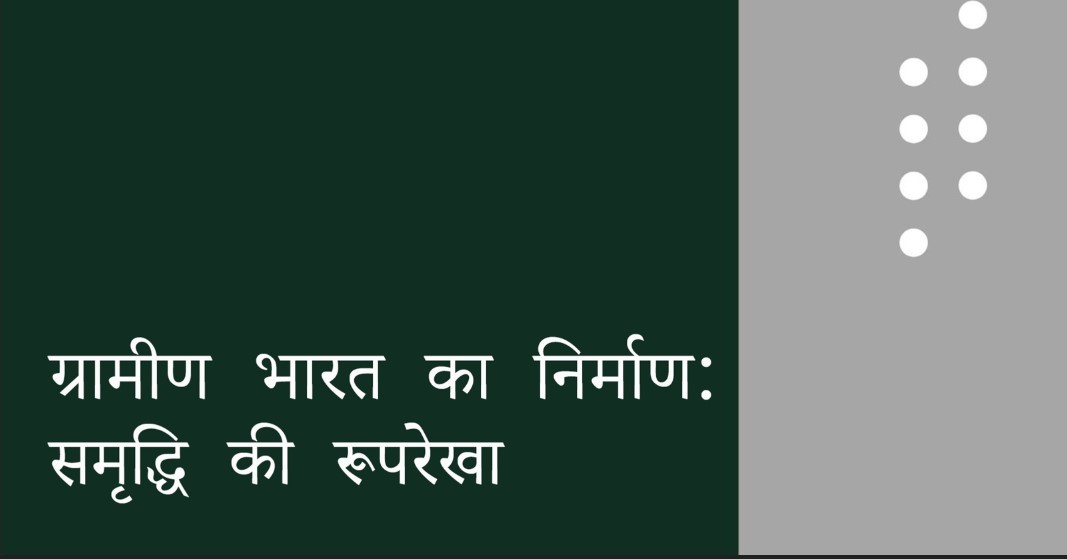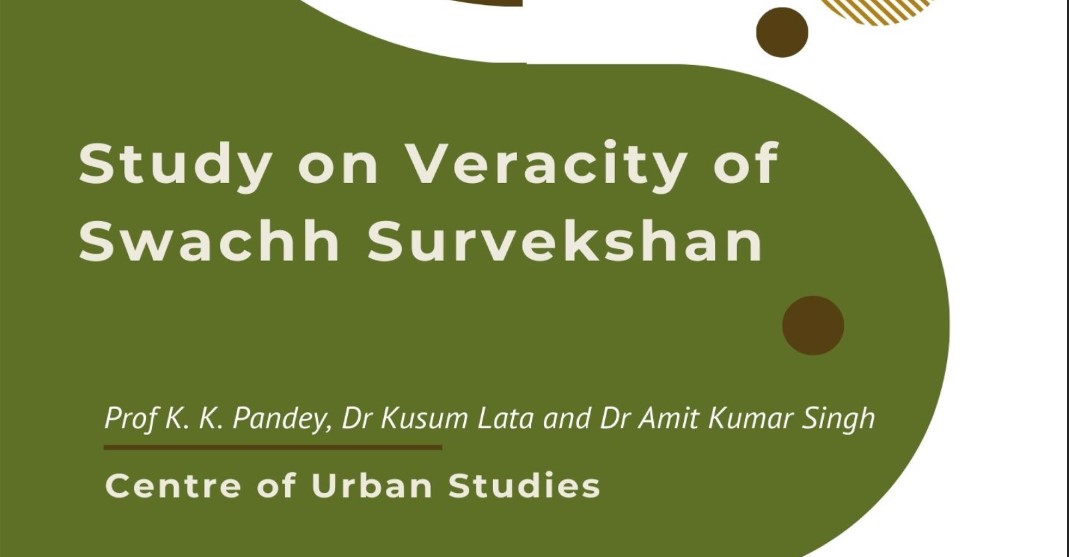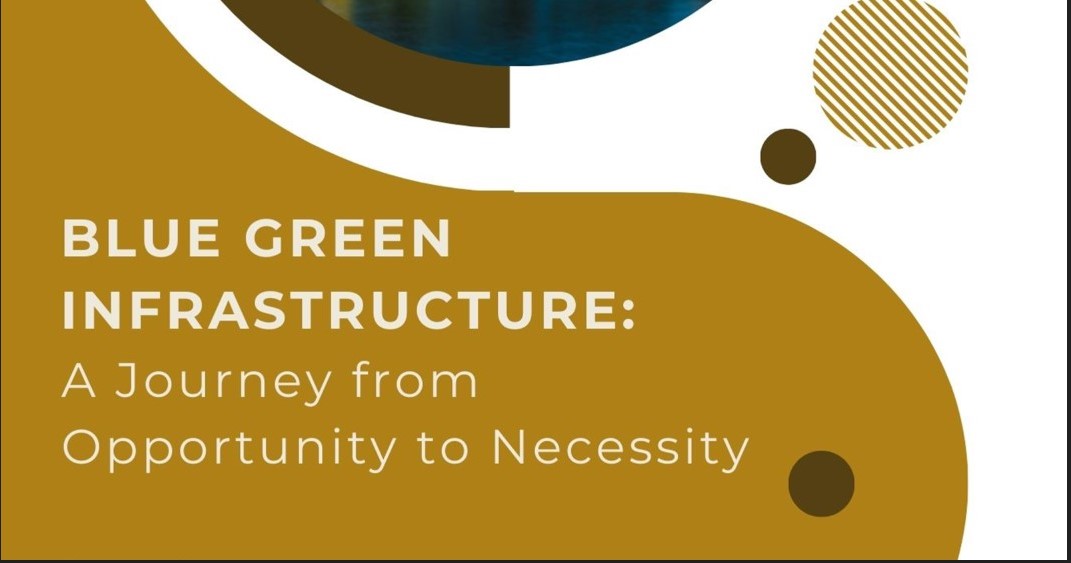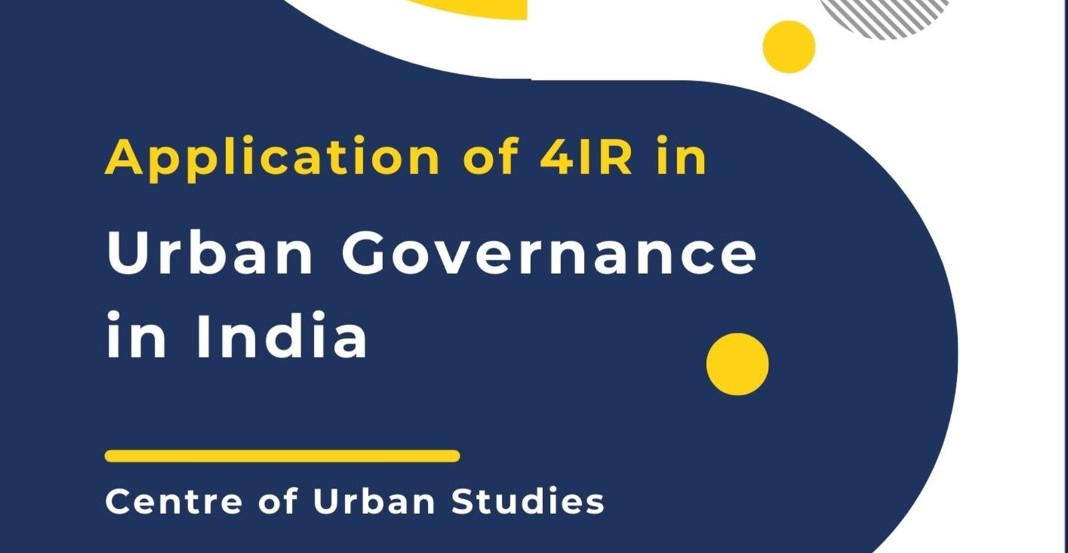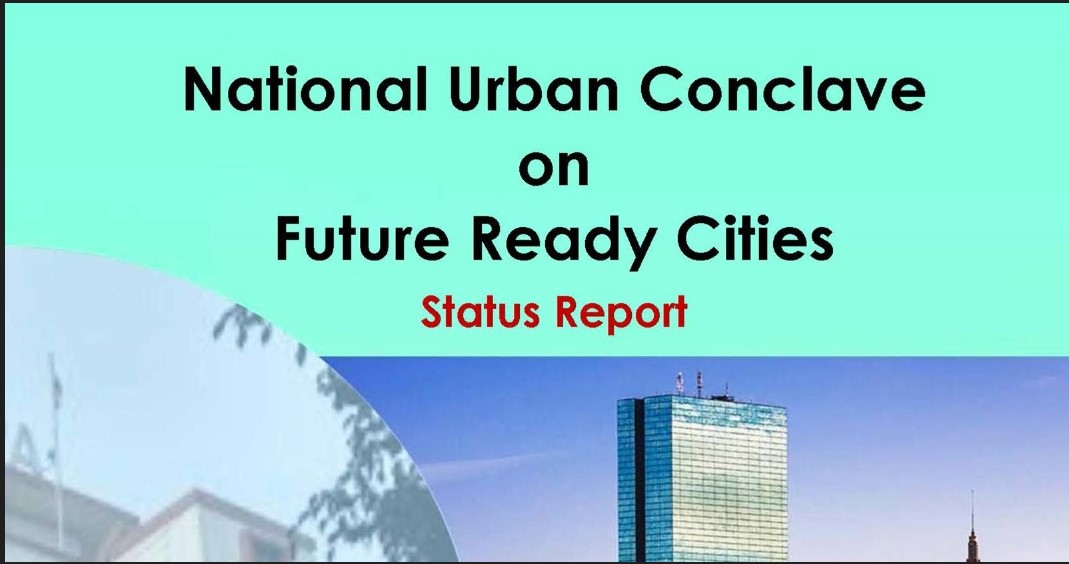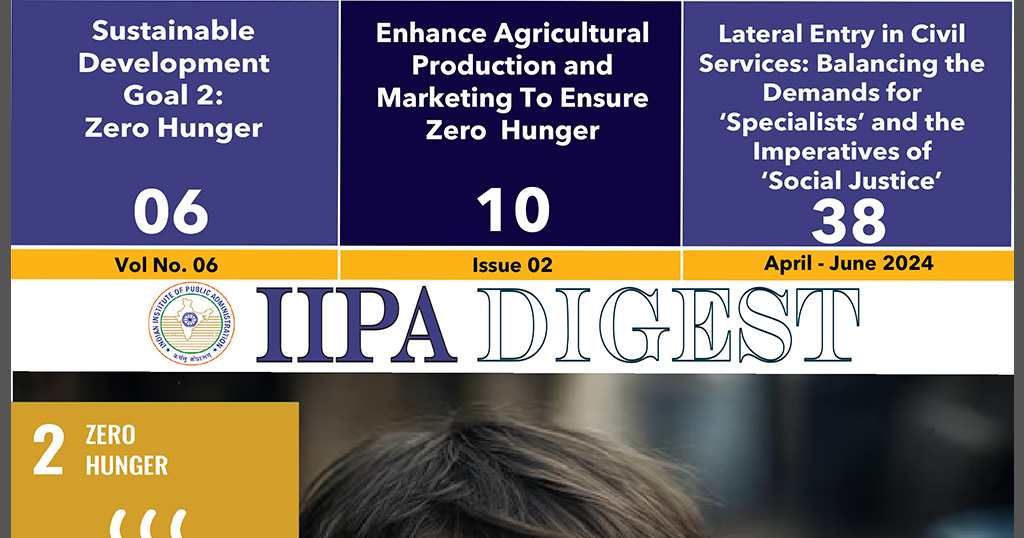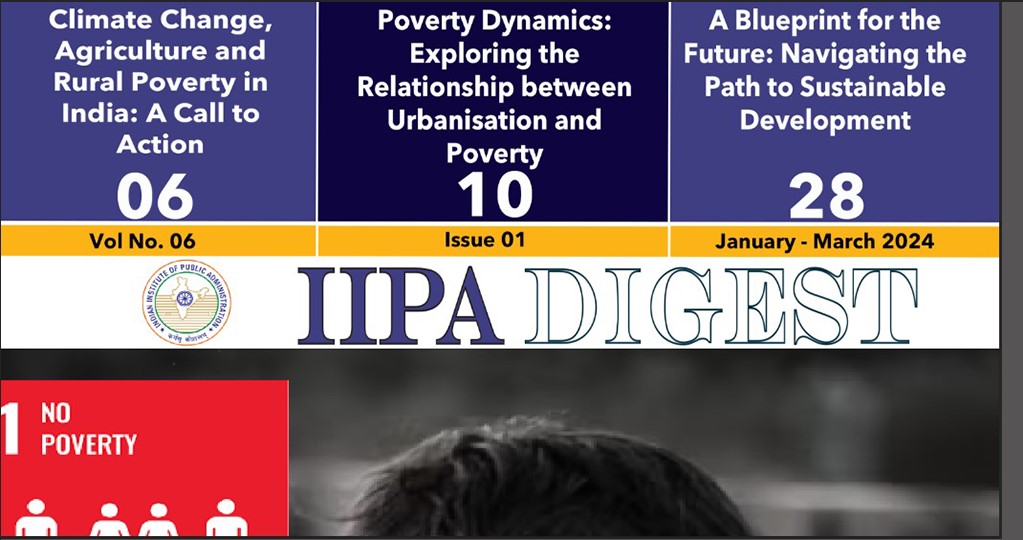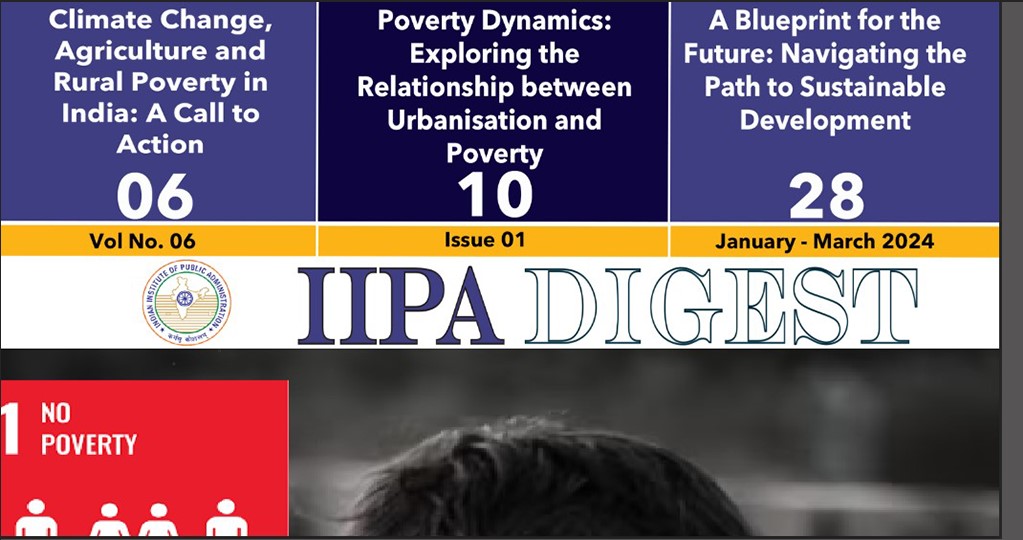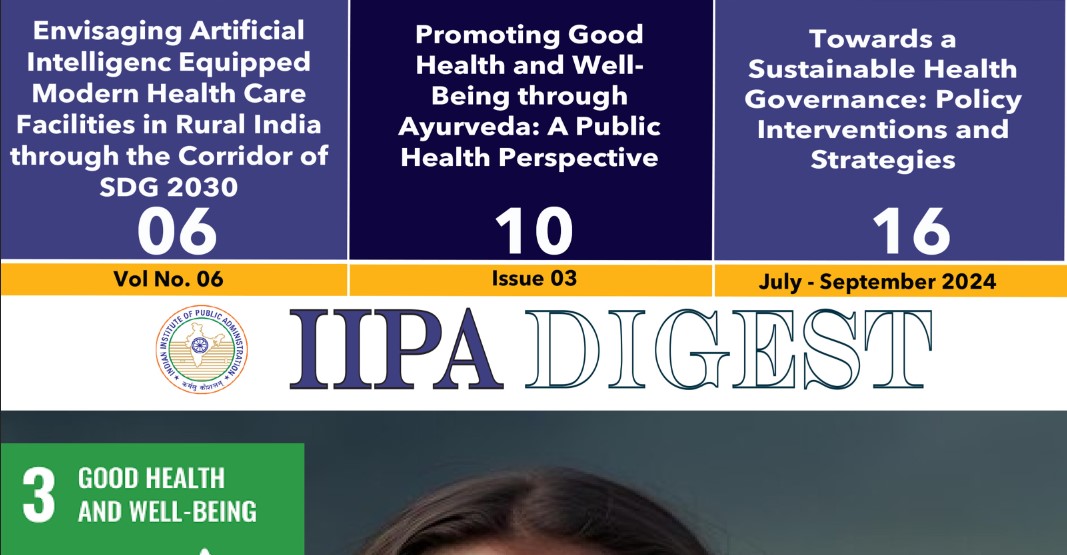Convergence in Action: Making Schemes Work Together at the last Mile
Abstract
This chapter examines the integration of key schemes/programs/approaches such as Deendayal Antyodaya Yojana-National Rural Livelihoods Mission (DAY-NRLM), Pradhan Mantri Formalisation of Micro Food Processing Enterprises (PMFME), and Mahatma Gandhi National Rural Employment Guarantee Scheme (MGNREGS). The Government of India statistics (2025) indicate that the NRLM has mobilised 10.05 crore women into 90.90 lakh Self-Help Groups (SHGs), while the MGNREGS has generated over 300 crore person-days of employment in FY 2024-25, illustrating the scale at which convergence can operate. However, it faces several systemic hurdles. Institutional fragmentation remains a significant barrier, with departments often working in silos and lacking mechanisms for joint planning or budgeting. Specific strategies and case studies used in Bihar ,Maharashtra ,Karnatka and Odisha to promote convergence among respective schemes are duly mentioned in the chapter.
Keywords: Scheme Convergence, Rural Development, Viksit Bharat, Design Thinking, Systems Thinking, Self-Help Groups (SHGs), Digital Transformation, Public Policy Formulation
Introduction
India’s rural landscape, home to over 65 percent of its population, continues to face persistent challenges, including agrarian distress, migration, and limited access to markets and essential services (Government of India, 2025a). As the nation charts its course towards Viksit Bharat by 2047, the integration of developmental schemes emerges as a transformative pathway to move from fragmented interventions to coordinated, multi-dimensional action. Convergence, defined as the intentional alignment of programmatic goals, financial resources, human capital, and implementation structures across schemes, offers more than administrative efficiency. It represents a governance approach aimed at equitable prosperity, particularly at the last mile where policy must translate into tangible improvements in people’s lives (Srinivas, 2025; Durga, 2024).
The rationale for convergence lies in the interconnected nature of rural challenges. For instance, employment generated under the Mahatma Gandhi National Rural Employment Guarantee Scheme (MGNREGS) can complement skill development and entrepreneurship support under the Deendayal Antyodaya Yojana National Rural Livelihoods Mission (DAY-NRLM) and the Pradhan Mantri Formalisation of Micro Food Processing Enterprises (PMFME). Such convergence can enhance productivity, promote sustainable livelihoods, and improve resilience against economic shocks.
The Mahatma Gandhi National Rural Employment Guarantee Scheme (MGNREGS), enacted in 2005, guarantees 100 days of unskilled wage employment to rural households and generated over 300 crore person-days in FY 2024–25. Initially rolled out in the year 2006 in the backwards districts of the country before expanding nationwide by 2008, it has played a dual role, alleviating poverty and stimulating rural demand, especially during downturns. In 2011–12, MGNREGS wages were higher than market wages, but they have stagnated since 2013 and now fall below market levels in 20 states (Himanshu, 2025). This stagnation has exacerbated rural distress, even as the scheme proved indispensable during the COVID-19 pandemic by employing millions. Today, with rural wages and farm incomes largely stagnant, the scheme’s positive spill-over effects, boosting consumption demand, improving infrastructure, and raising productivity, remain crucial.
Launched in the year 2011, the Deendayal Antyodaya Yojana - National Rural Livelihoods Mission (DAY-NRLM) aims at mobilising about 9-10 crore rural poor households into Self Help Groups (SHGs) in a phased manner and provide them long-term support such that they diversify their livelihoods, improve their incomes and quality of life. It covers 10.05 crore women in 90.90 lakh SHGs as of 2025 (Ministry of Rural Development, 2025a).
The Pradhan Mantri Formalisation of Micro Food Processing Enterprises (PMFME), introduced in 2020, supports micro-food enterprises through formalisation, subsidies, and training, disbursing Rs. 212.89 crore to states like Bihar by mid-2025 (Ministry of Food Processing Industries, 2025). Operating in isolation, these schemes risk inefficiencies such as duplicated beneficiary registrations and missed opportunities for collaboration with other schemes (Dreze & Khera, 2023). Convergence mitigates these risks, as demonstrated by integrated service hubs like Anganwadi centres under POSHAN Abhiyaan, which link nutrition, health, and livelihood services (Ministry of Women and Child Development, 2024).
Evidence from land reforms, such as secure tenure provisions in the Rajasthan Tenancy Act 1955, highlights how enabling policies can amplify convergence outcomes. Secure land rights encourage productive investments, allowing MGNREGA-created assets to support NRLM enterprises (Srinivas, 2025). The Economic Survey 2024–25 reports that districts adopting integrated approaches saw household incomes rise by 15–20 percent (Government of India, 2025b). In Telangana, MGNREGA served as a platform for disseminating NRLM-supported farm technologies, while PMFME funding enabled processing units, generating livelihoods for SHGs and boosting agricultural yields by 15 percent (Anithakumari, 2021; Ministry of Rural Development, 2025b).
Similarly, Gram Panchayats have pooled resources from multiple schemes, such as using MGNREGS wage components for labour in PMFME-supported infrastructure, reviving rural demand and aligning with domestic growth drivers amid global uncertainty. However, operational challenges persist. Frontline workers often shoulder multiple responsibilities across schemes, while technological glitches, similar to those experienced in multi-platform nutrition programmes can hinder timely delivery (Ministry of Women and Child Development, 2024).
The evidence is clear: convergence can transform rural development when schemes are planned and executed in a coordinated manner. Further, the Government of India (GoI) data from 2025 show that integrated districts achieved 15–20 percent higher SHG linkages under NRLM compared to non-integrated districts (Government of India, 2025b). These outcomes underscore the importance of strengthening institutional mechanisms, enhancing technological integration, and investing in the capacities of frontline workers to manage multi-scheme delivery effectively.
This chapter builds on these insights by outlining strategies for integrated planning at the Gram Panchayat, block, and district levels. It examines case studies where convergence has delivered measurable improvements, analyses the challenges that hinder its broader adoption, and offers policy recommendations for scaling successful models. The discussion reinforces the view that convergence is not merely a tool for efficiency, but a governance innovation that can drive inclusive growth and resilience in rural India on the path to Viksit Bharat @2047.
Literature Review: Perspectives on Scheme Convergence in India
Recent Indian scholarship (2024-2025) underscores the transformative potential of scheme convergence in rural development, particularly through MGNREGA-NRLM synergies. Mohanty (2024) demonstrates in Odisha that this convergence boosted household income by 12-18% through enhanced asset quality and livelihood diversity. Durga (2024) advocates for tailored convergence to address ecological variations, such as watershed projects in arid regions. Fernandez (2024) highlights gender impacts in Karnataka, where women-led NRLM SHGs integrated with MGNREGS for animal husbandry had reduced poverty by 25% and enhanced female agency. Holla (2024) finds that SHG membership increases MGNREGS access by 22%, curbing seasonal out-migration. Economic analyses further affirm convergence benefits. Tiwari et al. (2024) show that NRLM skill training reduces rural exodus by 14% in high-distress districts. Shah (2023) notes Rajasthan’s e-governance platforms are resolving land disputes and facilitating asset convergence. Consumption data indicate rural monthly per-capita consumption expenditure (MPCE) growth outpacing urban by 1.5% in 2023-24, partly due to scheme integrations (Government of India, 2025a). NIRD (2021) reports 51,209 animal sheds built via SHG-MGNREGA proposals, bolstering livestock livelihoods, while UNDP (2025b) highlights systemic benefits like natural resource management. However, challenges persist. Kindo (2024) critiques inefficiencies in MGNREGS-JAY (Jan Aarogya Yojana) convergence, noting 15-20% cost inflation without streamlined protocols. Dreze and Khera (2023) highlight fiscal constraints, with MGNREGA capped at 60% for FY 2025-26, necessitating convergence to manage demand surges. Scholars like Tacoli et al. (2025) and Anithakumari (2021) call for longitudinal studies on urban-rural linkages and digital equity to address implementation gaps. Apart from this review of literature, a detailed study of several case snippets also provides adequate empirical insights into the advantages of scheme convergence.
Case Snippets: Empirical Insights into Scheme Convergence
Empirical evidence underscores the efficacy of scheme convergence in enhancing rural livelihoods (Mohanty, 2024). Below are five case snippets from 2024-25 (the details of these are beyond the scope of the present study). These case snippets demonstrate the multiplicative benefits of convergence but highlight the need for scalable frameworks to address implementation gaps (Kindo, 2024).
Case Snippet 1: Agro-Processing Clusters in Bihar: In Jehanabad, convergence of NRLM’s 500 SHGs with PMFME subsidies (Rs. 376.98 crore), MGNREGA infrastructure (50,000 person-days), and DAY-NULM market linkages boosted household incomes by 30% for 15,000 households, reducing migration. Block-level Community Action Plans (CAPs) addressed implementation challenges (Ministry of Food Processing Industries, 2025; Ministry of Rural Development, 2025a; Durga, 2024; Tiwari et al., 2024).
Case Snippet 2: Migrant Resilience in Maharashtra: Pune’s initiative integrated NRLM skill training, PMFME formalization, MGNREGA works (1.2 lakh person-days), and DAY-NULM certification for migrants, achieving a 40% income increase. SHG-MGNREGA synergies enhanced resilience (Ministry of Rural Development, 2025b; Srinivas, 2025; Holla, 2024).
Case Snippet 3: Gender-Led Initiatives in Karnataka: Convergence of NRLM and MGNREGA facilitated the construction of 51,209 animal sheds, with PMFME adding value and DAY-NULM linking markets. This reduced poverty by 25% and empowered women, while urban market ties bolstered resilience (Fernandez, 2024; National Institute of Rural Development, 2021; Tacoli et al., 2025).
Case Snippet 4: Welfare Enhancement in Odisha: MGNREGA-NRLM integration improved asset quality, increasing household welfare by 12-18%. PMFME and DAY-NULM extended benefits to urban vending zones, enhancing livelihoods (Mohanty, 2024; Ministry of Rural Development, 2025a).
Strategies for Integrated Planning at Gram Panchayat, Block, and District Levels
Integrated planning is the cornerstone of scheme convergence, ensuring that bottom-up participatory processes align with top-down policy frameworks. At the Gram Panchayat level, the foundation lies in the Gram Panchayat Development Plan (GPDP), a comprehensive blueprint for village development mandated under the Panchayati Raj system. The GPDP process involves community consultations, needs assessment, and prioritisation of schemes, fostering ownership and accountability. For instance, GPs can integrate MGNREGA works with NRLM's livelihood activities, such as constructing assets that support SHG enterprises, while incorporating PMFME for food processing units (Ministry of Panchayati Raj, 2024). Key strategies to fructify scheme convergence at the GP level may include (Figure 1):
Figure 1: Pillars of Integrated Pillars for Scheme Convergence
1. Participatory Approaches to Need Assessment: The 74th Constitutional Amendment Act, 1992 mandates citizen participation in Gram Panchayat development planning, ensuring that local priorities reflect community needs. This can be further strengthened through tools such as Participatory Rural Appraisal (PRA)/Participatory Learning and Action (PLA), which use interactive, visual methods for collective problem identification and resource mapping; the Self-Selection Principle, enabling voluntary participation based on interest and capacity to foster ownership; and the Panchayat Development Plan (PDP) Portal, an online platform of the Ministry of Panchayati Raj where communities and citizens can propose projects, provide feedback, track progress, and engage in transparent deliberations for evidence-based, inclusive development planning. This approach reflects design thinking principles, starting with a deep understanding of local contexts, engaging stakeholders in co-creating solutions, and iteratively refining plans to ensure they are practical, community-driven, and contextually relevant.
2. Capacity Building for the Frontline Workers: As the primary delivery agents of local governance, achieving convergence-driven outcomes depends largely on frontline workers, who are equipped to coordinate across schemes. Targeted capacity building, covering convergence frameworks, ICT-enabled planning, should be institutionalised through regular training cycles, and on-ground simulations. Strategically skilled frontline staff can translate integrated plans into measurable outputs, ensuring efficiency, inclusivity, and sustainability in last-mile service delivery.
3. Performance-Linked Incentives: To institutionalise a results-oriented convergence culture, Gram Panchayats (GPs) should be incentivised through structured awards and additional resource allocations. The process begins with defining clear convergence indicators, followed by real-time tracking using digital dashboards. These dashboards capture both quantitative metrics (e.g., integration rates, fund utilisation) and qualitative outcomes (e.g., beneficiary reach, service quality). Periodic performance reviews identify high-performing GPs whose models can be documented, recognised, and replicated across other rural local bodies.
4. Digital Transformation Through Technology Integration: Technology is the backbone of scheme convergence. Without it, the earlier strategies (1-3) cannot be implemented effectively or at scale. Well-designed digital systems make it possible for planning, monitoring, and coordination to take place seamlessly across tiers of rural governance, from the Gram Panchayat to the national level.
At the block level, technology supports the consolidation of Gram Panchayat Development Plans into Block Development Plans and facilitates coordination across departments such as rural development and agriculture. Block Level Convergence Committees review these plans, identify overlaps such as duplication in NRLM and MGNREGS skill training, and ensure that real-time data inform decisions. This process enables more efficient allocation of resources and a more integrated approach to rural development.
At the district level, District Planning Committees, as outlined in the Manual for Integrated District Planning (Government of India, 2025b), use integrated dashboards to align budgets, synchronise timelines, and implement Convergence Action Plans. Maharashtra’s district-level convergence committees have shown how structured frameworks can successfully align programmes such as PMAY-G and MGNREGS for housing and sanitation. In Rajasthan, the use of digitised revenue courts has expedited the resolution of land disputes, creating the conditions for MGNREGA and NRLM to work together on watershed projects (Srinivas, 2025). The e-Gram Swaraj portal has further improved transparency, accessibility, and citizen oversight in Gram Panchayat-level planning (Ministry of Panchayati Raj, 2024). A recent example of AI-enabled innovation linked with the e-Gram Swaraj platform is the SabhaSaar initiative, which automates Gram Sabha documentation and strengthens convergence through structured, multilingual records (Box 1).
At the national level, interoperable platforms such as Aadhaar and DigiLocker demonstrate how secure and shared data systems can reduce redundancies, improve service delivery, and empower rural communities (Charru Malhotra, 2016; 2022). The CoWIN platform offers a useful example.A useful analogy can be drawn from the CoWIN platform during the COVID-19 pandemic. Initially designed exclusively for COVID-19 vaccination, CoWIN was subsequently expanded to include other vaccines such as polio and routine immunisation.
This demonstrates how a single-purpose digital platform can be scaled and repurposed for multiple, related public health functions. Similarly, the POSHAN Tracker, currently limited to Anganwadi-based service delivery, could be converged with Tithi Bhojan and POSHAN Abhiyaan into a single, integrated platform (Box-2).
To achieve seamless integration of data from Self-Help Groups (SHGs), Gram Panchayats (GPs), and related agencies, interoperable databases are essential to connect diverse datasets. Real-time data capture and monitoring can be enabled through Internet-of-Things (IoT) technologies, geo-tagging, and Management Information System (MIS) dashboards. However, before any strategic overhauling of schemes and policies is proposed, it is pertinent to remember that this convergence goes beyond a ‘technology odyssey’ and that in the rural Indian context, ‘one size does not and cannot fit all.’ Charru Malhotra (2013) cautions that it is important to understand the regional administrative cultures, physical infrastructure limitations, and socio-cultural dynamics that influence technology adoption. For this, she suggests that integrating indigenous knowledge / traditional knowledge systems prevalent in regions should be fused with digital technologies to not only preserve cultural heritage but also to enhance the relevance and effectiveness of public service delivery and local governance.
Life Cycle Approach: The life cycle approach offers a holistic framework for scheme convergence, ensuring that interventions address citizens’ needs from ‘cradle-to-grave.’ This perspective applies systems thinking by viewing multiple schemes as interconnected components within a single ecosystem, where changes at one stage of life influence outcomes at others. It links early childhood nutrition and education, adolescent health (anaemia screening, counselling aligning with the national mission of Anaemia Mukt Bharat, 2016), maternal care (Iron folic Acid -IFC tracking, referrals), adult livelihoods (nutrition–livelihood linkages), and elderly welfare (screening, dietary advice) into a continuous, context-specific support system. A unified digital platform with lightweight, modular components can adapt services to local needs while ensuring continuity. Successful implementation depends on robust governance, trained frontline workers, and strong privacy safeguards. As emphasised by Tiwari et al. (2024), longitudinal studies are essential to assess long-term digital and governance impacts, enabling iterative refinements that make convergence more inclusive, connected, and sustainable.
These strategies, informed by principles of digital transformation, ensure that convergence translates into prosperity.
Conclusive Remarks: Convergence in action is essential for building rural India, transforming fragmented schemes into a cohesive roadmap for prosperity. By integrating planning processes at the Gram Panchayat, block, and district levels, and by learning from proven case studies, India can harness synergies that drive inclusive growth. The enduring relevance of any convergence effort will depend on adequate budgetary allocations, fair wage structures, and the systematic removal of delivery bottlenecks. The future of convergence lies in sustained application of the platform approach to service delivery, continuous capacity building of frontline workers, and adaptive policy frameworks that respond to the diversity of local contexts. Aligning schemes, stakeholders, and resources into a unified development ecosystem can unlock transformative potential for rural communities. Ultimately, convergence is more than a technical or operational measure, it is a governance innovation. When pursued with foresight, inclusivity, and sensitivity to regional realities, it can ensure that no community is left behind on the path to Viksit Bharat @2047.
Acknowledgements: I would like to express my sincere gratitude to Dr. Priyank Goswami (Senior Research Officer, Digital Transformation and Digital India Research Team @IIPA) for his invaluable support in researching data related to various rural development schemes and identifying best practices relevant to this study. His insights and timely inputs were instrumental in shaping the paper, especially during a period of intense pressure with multiple project deadlines. Thanks are also overdue to Mr. Ayush Kumar for his excellent infographic (Figure 1) that so meaningfully translates my vision of Building Rural India through convergence of schemes to an attractive reality where the citizen rules the roost.
References
1. Anithakumari, P. (2021). Digital equity in rural development: Challenges and opportunities. Journal of Rural Development, 40(3), 112–130.
2. Charru Malhotra et.al(2013). Citizen-Centric Approach for Converging Indigenous Knowledge Systems using ICT. In Dr. Usha M Munshi and Prof. Vinod Sharma (Eds.), Strategizing Knowledge Management and Environmental Paradigm (Ed), Jain Publishing House: New-Delhi.
3. Charru Malhotra et al.(2016). ICT4D: Innovating Governance to be more Citizen-Centric using ICT. Management in Government: Journal of Administrative Reforms, XLVI (1), DARP&G, Government of India, New Delhi (pp. 1-14. 10) ISSN: 0047-570X
4. Charru Malhotra (2022): “e-Governance Practice in Service Delivery of Rural Local Government In Rural Local Government, School of Social Sciences, Faculty of Public Administration, Indira Gandhi National Open University –IGNOU ; Available at https://egyankosh.ac.in/bitstream/123456789/85646/3/
5. CWAS, CEPT University, & Urban Management Centre. (2022). SBM-NULM Convergence – State Level Strategy for Maharashtra. Center for Water and Sanitation, CEPT University. Retrieved from
https://cwas.org.in/resources/file_manager/Maharashtra_SBM-NULM_Convergence%20Strategy.pdf
6. de Hoop, T., Siwach, G., Holla, C., & Mahapatra, B. (2022). Convergence of social protection programmes in India: The impact of self-help groups on access to and employment under the Mahatma Gandhi National Rural Employment Guarantee Scheme. ECWG Working Paper 07. Retrieved from https://womensgroupevidence.org/sites/default/files/2022-02/1.%20Brief%20MGNREGS%20November%202021.pdf; Assessed on Aug 2, 2025
7. Dreze, J., & Khera, R. (2023). Rural employment guarantees in India: Challenges and opportunities. Economic and Political Weekly, 58(12), 45-52.
8. Durga, A. (2024). Regional priorities in MGNREGA convergence: Ecological and livelihood impacts. Indian Journal of Sustainable Development, 10(2), 89–104.
9. Fernandez, M. (2024). Gendered synergies in rural development: Women-led SHGs and MGNREGA in Karnataka. Gender & Development, 32(1), 56–73.
10. Government of India. (2025a). Annual report on consumption expenditure: Rural-urban trends 2023-24. Ministry of Statistics and Programme Implementation.
11. Government of India. (2025b). Economic Survey 2024-25. Ministry of Finance.
12. Himanshu. (2025). India's rural jobs scheme is more relevant today than it may seem. Mint.
13. Holla, S. (2024). Social protection through convergence: SHGs and MGNREGA linkages. Journal of Social Welfare, 29(4), 201–218.
14. Kindo, R. (2024). Convergence critiques: Assessing MGNREGA and IAY integration. Housing Studies Review, 15(2), 45–60.
15. Ministry of Food Processing Industries. (2025). Annual report on PMFME implementation: Agro-processing clusters 2024-25. Government of India.
16. Ministry of Housing and Urban Affairs. (2024). Monthly Progress Report: March 2024. Government of India.
17. Ministry of Panchayati Raj. (2024). Guidelines for GPDP. Government of India.
18. Ministry of Rural Development. (2025a). Annual report on MGNREGA-NRLM convergence: Bihar and Odisha outcomes 2024-25. Government of India.
19. Ministry of Rural Development. (2025b). MGNREGA and DAY-NULM integration: Maharashtra and Telangana case studies 2024-25. Government of India.
20. Ministry of Women and Child Development. (2024). Convergence in Nutrition Schemes: POSHAN Abhiyaan Report. Government of India.
21. Mohanty, P. (2024). Empirical insights on MGNREGA-NRLM convergence: Evidence from Odisha. Indian Economic Review, 59(1), 23–39.
22. National Institute of Rural Development. (2021). Compendium on MGNREGA-NRLM best practices: Livestock and livelihood outcomes. NIRD Publications.
23. NITI Aayog. (2023). Roadmap for Access to Clean Cooking Energy in India. Government of India.
24. Shah, R. (2023). E-governance and convergence: Resolving land disputes for MGNREGA-NRLM integration. Governance and Technology Journal, 8(4), 77–92.
25. Srinivas, V. (2025). Land Reforms & Land Use Opportunities. IIPA Paper.
26. Tacoli, C., Sharma, A., & Rao, N. (2025). Urban-rural linkages in scheme convergence: A research agenda. Journal of Rural and Urban Studies, 12(1), 15–29.
27. Tiwari, S., Gupta, R., & Singh, V. (2024). MGNREGA and migration: Impacts of convergent skill training. Labour Economics Quarterly, 47(3), 102–119.
28. United Nations Development Programme. (2015). Convergence initiatives for sustainable rural development. UNDP India. (Updated in Government of India, 2025b).
Leave a comment
More articles from Urban & Rural Areas
